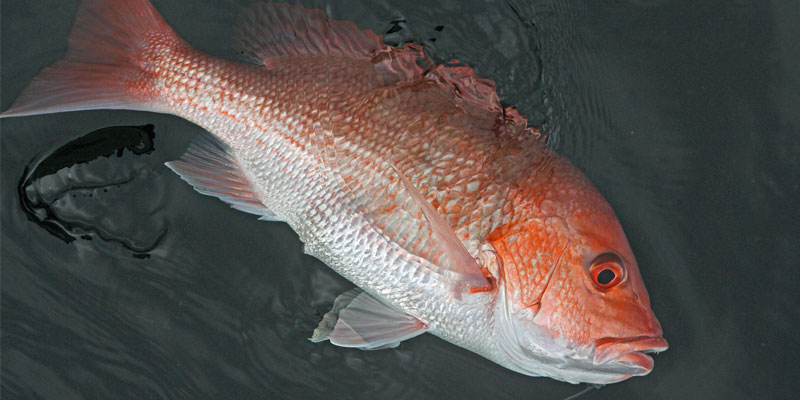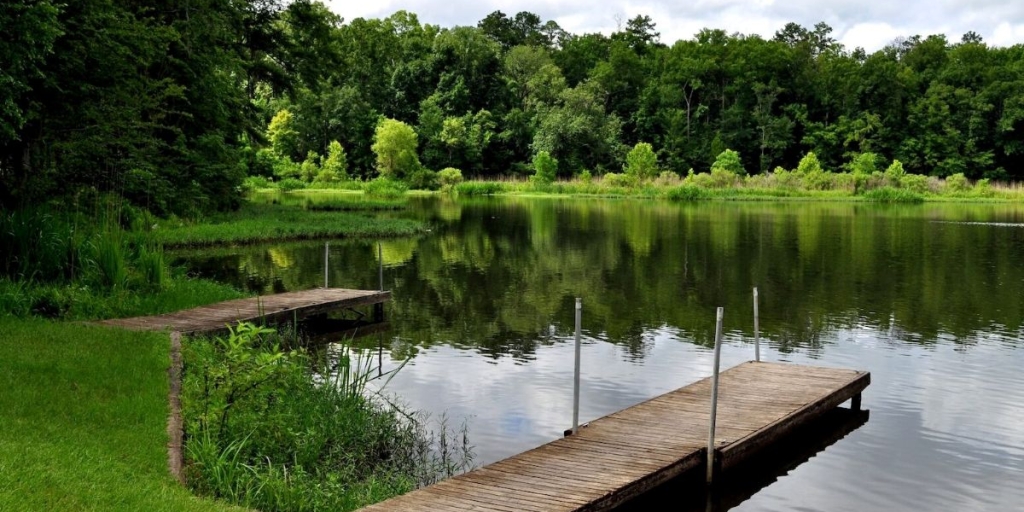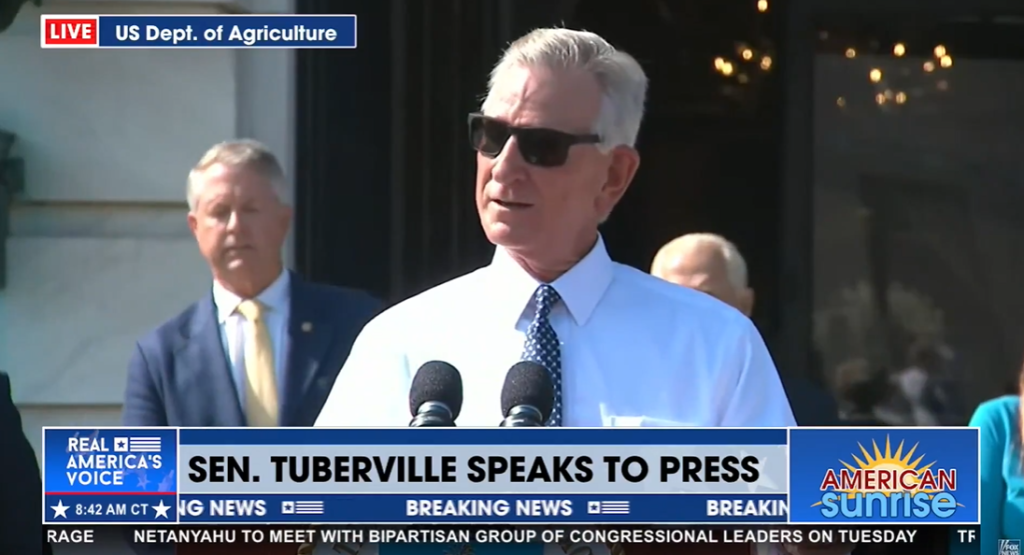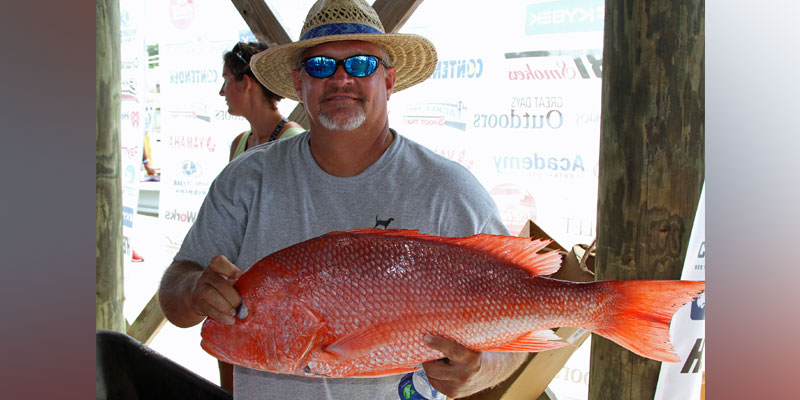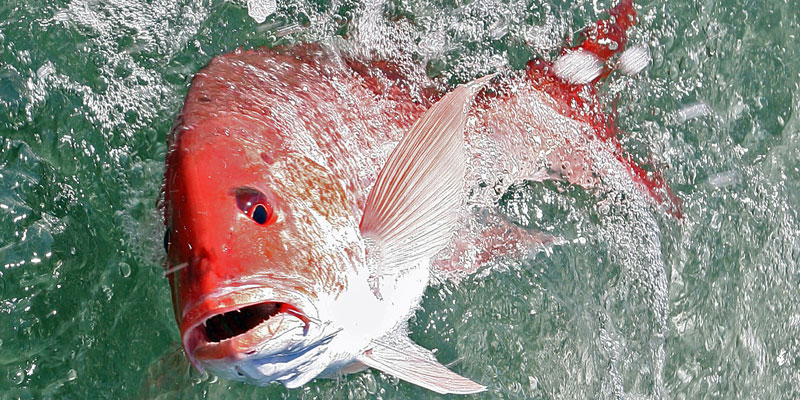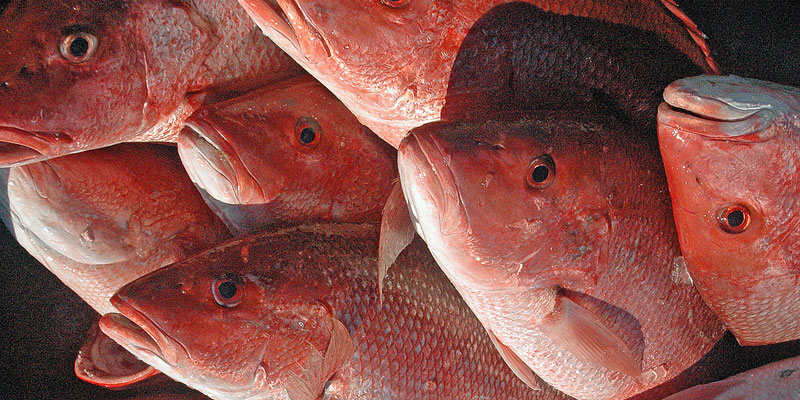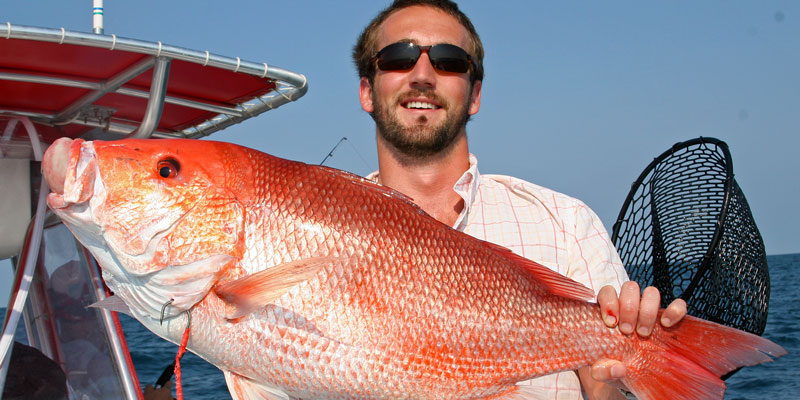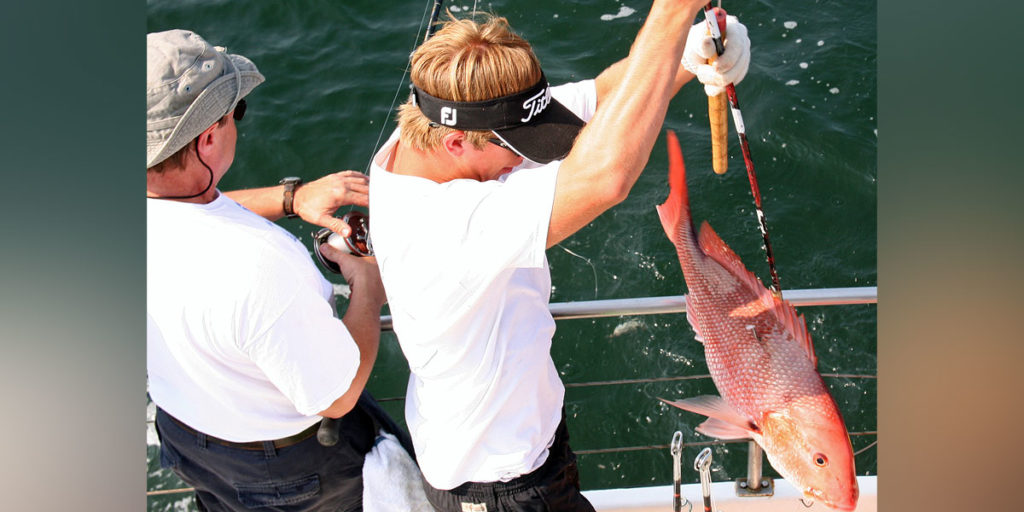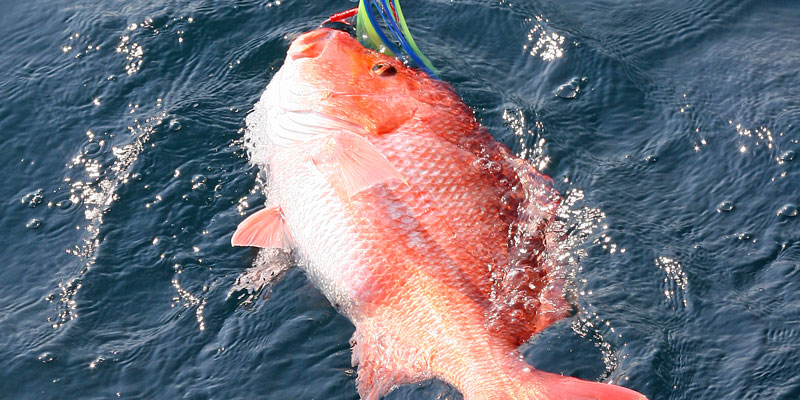Unlike last year when almost perfect weather during snapper season led to a faster-than-expected harvest of the quota, the 2019 snapper season reverted to normal weather conditions, leading to a longer season than initially announced.
Snapper anglers enjoyed a 38-day season in 2019 after the 2018 season had to be ended after 27 days to avoid exceeding Alabama’s quota of about 1 million pounds. Alabama Marine Resources Division (MRD) officials were able to add three weekend extensions to the 2019 season to fill this year’s quota.
“This season was more typical of a south Alabama summer,” MRD Director Scott Bannon said. “We had more thunderstorms and increased wave heights on some weekends as opposed to 2018, which had near perfect weather through June and July.
“So, the effort dropped over several of the weekends due to the weather. But that is something we want to have happen; we want people to avoid going when the weather is rough or when it exceeds their boat’s capabilities and their personal capabilities. We want them to stay home during the bad weather because we will still have those pounds of fish to catch later in the year.”
Alabama’s 2019 quota was 1,079,513 pounds, and the final numbers show 1,050,651 pounds of fish were estimated to have been caught, leaving a little more than 28,000 pounds in the water. Bannon said the goal was to get as close to the quota as possible without going over.
“That 28,000 pounds is less than one good weekend day of fishing in Alabama,” he said. “I don’t think we could have done any better.”
MRD officials are able to closely monitor the snapper harvest off the Alabama coast through the mandatory Red Snapper Reporting System, otherwise known as Snapper Check.
“We were able to get that close because of Snapper Check,” Bannon said. “The more people who report, the better the numbers and the better we can predict the effort for the weekend.”
Bannon said one angler lamented that he lost 12 days to weather but only got five back. However, other anglers had the opportunity and took advantage of it.
“I explained to him that he, as an individual, lost that many days, but not everybody was like that,” Bannon said. “We had landings for every weekend, even when the tropical storm went by. I would not have recommended it on some of those days, but some people went anyway. We added some additional days during amberjack season in August and then some days on Labor Day weekend. Ultimately, we added the final weekend in October to give people enough time to plan and to have dates when people were more likely to go fishing. The 38-day season is probably more typical of what would be an average season with the weather days. I know the July average wave heights were 3 feet or higher.”
The average size of the snapper caught during the 2019 season was down slightly to 6.81 pounds, which Bannon attributed to several reasons.
“One reason was the weather,” he said. “People didn’t run as far and went to areas that are more heavily fished. Also, I think some people now are not as concerned about trying to catch the biggest fish possible. They’re just catching fish, which is what we want. High-grading or culling and discarding fish works against us if the discards don’t survive. I think more people were happy with the fish they were catching, and they felt this wasn’t going to be the only day they were going to get to go fishing.”
Alabama’s snapper seasons for 2018 and 2019 were operated under an exempted fishing permit (EFP) as the Gulf of Mexico Fishery Management Council worked to approve a state management system, Amendment 50, which passed and is awaiting the Secretary of Commerce’s signature.
“I think the EFP worked well,” Bannon said. “Under Amendment 50, we will have the ability for the state to make adjustments to size, bag limits and season dates. We think our bag and size limits have worked well. It helps keep our data similar from year to year, and we have a good handle on effort based on that.
“So, we’re going to be cautious about making any changes. We want people to get comfortable that the states are managing the snapper season effectively. I think the EFP proved we can manage it as effectively and efficiently as possible. We have been able to give anglers more days because we’re able to account for the fish harvested during the season. The key to the success is the angler reporting the data, and that is why we have the optional reporting for greater amberjack and gray triggerfish in the app.”
Bannon took the opportunity last week to join the University of South Alabama Marine Sciences Department and Dauphin Island Sea Lab on their last red snapper research trip for the year out of Dauphin Island.
The research trip was designed to explore several artificial reefs that Skipper Thierry, captain of the Escape, discovered during his regular charter trips this past summer. Each reef was of unknown origin. On several reefs where a remotely operated vehicle (ROV) was deployed the structures were chicken transport cages, which held a variety of fish species including an abundance of small red snapper.
“From a research perspective, you want to be able to sample a variety of sizes and ages of fish and reef structures,” Bannon said. “These were not public reefs that were placed out there. We don’t know anything about who placed them or when they were placed. They held a lot of younger fish, but the numbers of those fish looked good. In a management system, if all you see are older fish that’s not always a good thing. You want to see a wide spectrum of ages. You want to see the younger fish coming into the system and aging out at the appropriate time and that we’re taking the appropriate numbers.
“That’s the advantage of a program that does hook-and-line sampling along with the ROV; you get to see what’s there. That helps add to the data. It’s not necessarily that only the small fish were biting. If you sample the reef with only hook and line, you may only see one age group of fish. With the ROV, we know that particular reef had an abundance of small fish as well as larger fish. Those spots were loaded up.”
During the trip, several large gray triggerfish were landed, which is encouraging for Bannon.
“Triggerfish is definitely a species of concern for us,” he said. “These research trips have shown an increase in abundance. So, we feel good, in the Alabama reef zone, that they are rebuilding. That’s a good sign. We hope that is reflected in the next stock assessment.”
The snapper research like that executed last week will be partially funded by Alabama’s new reef fish endorsement to the saltwater fishing license that went into effect September 1, 2019.
Dr. Bob Shipp, Professor Emeritus at USA Marine Science, has been doing this snapper research for more than two decades.
“For the last 21 years, we have been maintaining a sampling program for red snapper and triggerfish,” Shipp said. “I think it’s probably the longest time-series available for those two species. A time-series really gives you trend information you can’t get any other way. What it has shown is that the availability and ability to catch red snapper have really improved since 2005. The average size has increased a little bit. When you put the ROV with the camera down on our reefs, they’re teeming with snapper. There are tremendous number of juveniles, 2- and 3-year-olds, more so than in the past. That might indicate a strong year class, but it could be an outlier on the five stations we sampled, so we’re going to be watching that. But there was an abundance of juvenile fish on the reefs we fished today.”
Shipp said the red snapper population in Alabama’s unparalleled artificial reef zone is in great shape.
“Our program, along with that of Dr. Sean Powers at the University of South Alabama, shows a really healthy population in our artificial reef zones,” he said. “We have 1,200 square miles of reef zone, and anybody can go out in that reef zone and get a bag limit of red snapper in about 20 minutes.”
During last week’s trip, where the anglers fished a designated amount of time at each spot, several triggerfish that weighed a whopping 8 pounds or better were hauled onboard.
“For triggerfish, the average size has really increased,” Shipp said. “We saw that today. We’ve never seen so many big triggerfish. We really think there is a problem with the data coming out as far as triggerfish are concerned. Off Alabama, we don’t see them in trouble at all.”
David Rainer is an award-winning writer who has covered Alabama’s great outdoors for 25 years. The former outdoors editor at the Mobile Press-Register, he writes for Outdoor Alabama, the website of the Alabama Department of Conservation and Natural Resources.




